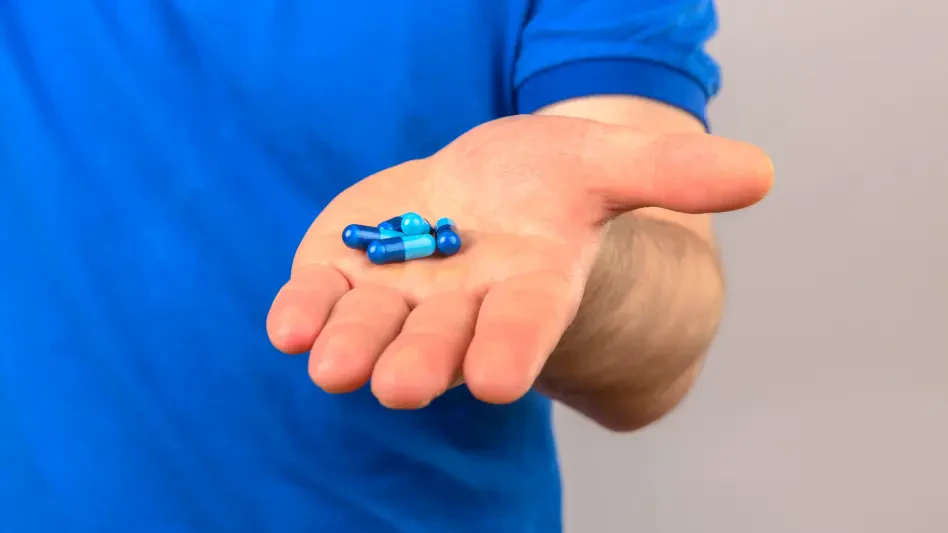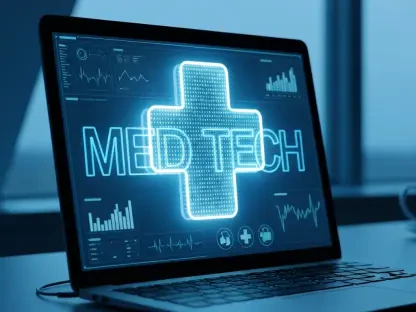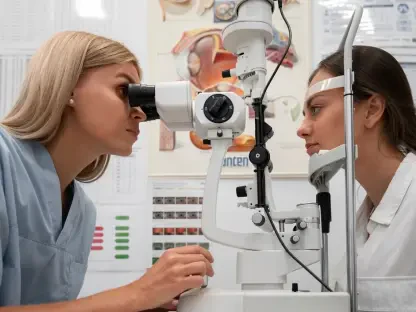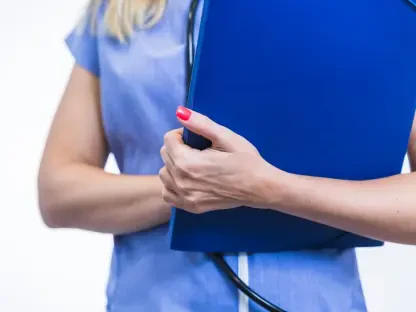Today, we’re diving into the complex world of biosimilar drugs and regulatory challenges with Faisal Zain, a renowned healthcare expert specializing in medical technology. With his extensive background in the manufacturing of medical devices for diagnostics and treatment, Faisal brings a unique perspective on how innovation intersects with policy in the pharmaceutical industry. In this interview, we explore the FDA’s recent push to streamline biosimilar approvals, the staggering cost implications for patients and the healthcare system, and the significant roadblocks posed by patent disputes. Join us as we unpack these critical issues shaping access to affordable medicines.
Can you break down the FDA’s recent plan to boost biosimilar drugs and what it aims to achieve?
Absolutely. The FDA’s plan, announced on October 29, is a game-changer for biosimilars, which are essentially lower-cost versions of complex biologic drugs used to treat conditions like cancer and arthritis. The goal is to cut the time and money it takes to bring these drugs to market by roughly half. By streamlining the approval process, the FDA wants to make it easier for companies to develop biosimilars, ultimately increasing competition and driving down prices for patients who rely on these expensive treatments.
How is the FDA planning to reduce the time and cost barriers for biosimilar development?
The FDA is shifting toward a more simplified regulatory framework, treating biosimilars more like traditional generic drugs. This means moving away from requiring extensive clinical studies, which can be incredibly costly and time-consuming. Instead, they’re allowing companies to use advanced analytical tests to prove that a biosimilar is nearly identical to the original biologic in terms of safety and effectiveness. This could save developers up to $100 million per drug, which is a huge incentive to get more of these products into the pipeline.
Why is treating biosimilars like generic drugs considered such a significant shift?
It’s a big deal because biologics are far more complex than typical generics. They’re made from living organisms, so creating an exact copy is nearly impossible. Historically, the FDA demanded rigorous testing to ensure safety, much like what’s required for brand-new drugs. By aligning the process closer to generics, which are simpler chemical compounds, the FDA is signaling confidence in modern technology to assess similarity without exhaustive clinical trials. This reduces the burden on manufacturers and could accelerate access to affordable options for patients.
With potential savings of $100 million per drug, how might this influence the types of medicines companies choose to develop?
That kind of cost reduction is a massive motivator. It could encourage companies to invest in biosimilars for a broader range of conditions, especially those that are currently underserved. Instead of focusing only on blockbuster drugs with huge markets, developers might take on projects for rarer diseases or conditions with smaller patient populations, knowing the financial risk is lower. This could mean more treatment options for people who’ve been left with limited or no affordable choices.
What are some specific conditions or diseases that could see improved access if more biosimilars hit the market?
Conditions like rheumatoid arthritis, psoriatic arthritis, and various forms of cancer stand to benefit immensely. These are often treated with biologics that carry hefty price tags—think thousands of dollars a month. Biosimilars for drugs like Humira or Keytruda could make a real difference for patients struggling with out-of-pocket costs. Additionally, autoimmune disorders and even some rare conditions might see new options if companies expand their focus, as the lower development costs make it feasible to target smaller markets.
Given that biosimilars can cost up to 90% less than brand-name biologics, why haven’t they captured a larger share of the market?
It’s a mix of factors. First, there’s the long delay in getting biosimilars to market due to legal battles over patents. Even after FDA approval, brand-name companies often use extensive patent portfolios to block competition for years. Second, even when biosimilars are available, market dynamics like rebates from brand-name manufacturers to pharmacy benefit managers can keep the originals favored on insurance formularies. Patients and doctors also sometimes hesitate to switch if a brand-name drug is working, due to uncertainty or lack of awareness about biosimilars.
With biologics accounting for over half of the $600 billion spent annually on medicines in the U.S., what kind of savings could biosimilars realistically bring to the table?
The potential is staggering. If biosimilars can capture even a modest share of the market—say, 20-30%—we’re talking billions in savings annually for the healthcare system. For patients, especially those on high-cost drugs without generics, out-of-pocket costs could drop dramatically if biosimilars priced at 10-20% of the original become widely accessible. However, realizing these savings depends on overcoming patent hurdles and ensuring insurance plans prioritize these cheaper alternatives, which isn’t guaranteed yet.
Why do you think Humira biosimilars, despite being so much cheaper, only make up about a quarter of sales in 2024?
It comes down to entrenched systems. Brand-name companies like the one behind Humira offer substantial rebates to pharmacy benefit managers and insurers, incentivizing them to keep the original drug on preferred lists. Even though biosimilars can cost a fraction of the $6,500 monthly price, these behind-the-scenes deals often mean patients don’t see the cheaper option as readily available. Plus, after years of delays from patent litigation, biosimilars are still playing catch-up in terms of market awareness and trust among prescribers.
Can you explain how rebates from brand-name drug companies to pharmacy benefit managers impact patient access to biosimilars?
Sure, it’s a bit of a hidden game. Pharmacy benefit managers, or PBMs, design the formularies that dictate which drugs are covered by insurance and at what cost to patients. Brand-name companies often provide large rebates to PBMs to ensure their drug gets a favorable spot on these lists. Some of that money gets passed to insurance plans, which can lower premiums for everyone but often at the expense of patients needing expensive drugs. Biosimilars, lacking similar rebate power, get sidelined, so patients end up paying more or can’t access the cheaper alternative even if it’s approved.
How do insurance plans contribute to the high costs faced by patients who need biologic drugs?
Insurance plans often structure their coverage in ways that disproportionately burden patients on expensive medications. They might place biologics in higher tiers with significant co-pays or deductibles, or they might not cover biosimilars at all if the brand-name drug offers better rebates. Essentially, plans use these high-cost drugs to offset costs across their entire population, which means individuals who need biologics can face thousands in out-of-pocket expenses annually, even with insurance, unless policies shift to prioritize affordability.
What’s the key difference between the FDA’s old approach to regulating biosimilars and the new direction they’re taking?
The old approach treated biosimilars almost like brand-new drugs because of their complexity, requiring extensive clinical studies to prove they were safe and effective compared to the original biologic. The new direction leans on scientific advancements, allowing manufacturers to use detailed lab analyses instead of large-scale human trials in many cases. This shift acknowledges that we can now reliably predict a biosimilar’s performance without the same level of testing, saving time and resources.
Why did the FDA initially require clinical studies for biosimilars, and what advancements have led to this change?
Initially, the FDA required clinical studies because biologics are made from living cells, meaning no two batches are identical, even for the same drug. There was a concern that small differences could affect safety or efficacy, so they wanted robust human data to confirm similarity. Over time, analytical technologies have become so precise that they can detect and compare molecular structures with incredible accuracy. Research also showed that these lab tests often predict clinical outcomes just as well as patient studies, paving the way for the FDA to relax those requirements.
Can you clarify what ‘switching’ tests are and why the FDA is stepping away from mandating them for biosimilars?
Switching tests involve putting patients on a brand-name biologic, then switching them to a biosimilar, or vice versa, to see if their response remains consistent. The idea was to ensure that alternating between the two wouldn’t cause issues like reduced effectiveness or immune reactions. The FDA is moving away from requiring these because data over the years has shown that, for most biosimilars, analytical similarity is enough to predict safe switching. Dropping this requirement cuts costs and speeds up approvals without compromising safety.
How does achieving ‘interchangeable’ status for a biosimilar benefit patients and pharmacists?
Interchangeable status is a big win. It means a biosimilar has been proven so similar to the brand-name drug that pharmacists can substitute it without needing a doctor’s specific approval, much like with generics. For patients, this often translates to lower costs at the pharmacy counter since the cheaper option can be dispensed automatically. For pharmacists, it simplifies the process and reduces administrative hurdles, making it easier to provide cost-effective care, especially in states where this status is required for substitution.
Even with these FDA changes, what are some of the biggest challenges still facing biosimilars in reaching patients?
The FDA’s efforts are a step forward, but patent disputes remain the biggest roadblock. Brand-name companies often file dozens, if not hundreds, of patents to protect their drugs, creating a thicket that biosimilar makers must navigate through lengthy and expensive legal battles. Additionally, market access issues persist—insurance formularies and rebate structures often favor originals over biosimilars. Until these systemic barriers are addressed, even approved biosimilars can struggle to gain traction.
What is your forecast for the future of biosimilars in the U.S. healthcare system over the next decade?
I’m cautiously optimistic. If the FDA’s streamlined regulations hold and gain traction, we could see a significant uptick in biosimilar approvals and market share, especially as more biologics lose patent protection in the coming years. Savings could reach tens of billions annually if competition ramps up. However, the patent office’s current stance on limiting challenges to brand-name patents could slow progress, and market dynamics like rebates will need reform to truly prioritize patient access. I think we’ll see gradual improvement, but it’ll require coordinated policy changes beyond just the FDA to fully realize the potential of biosimilars.









